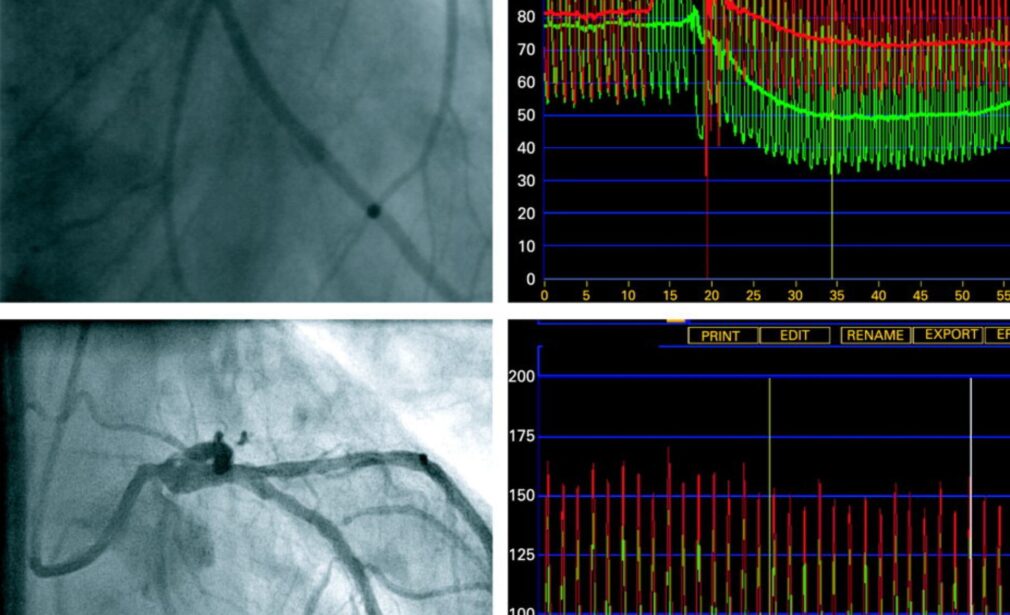FFR (Fractional Flow Reserve) Guided PCI – Advanced Cardiac Care in Mohali
Introduction to FFR-Guided PCI
When it comes to treating coronary artery disease, accuracy is everything. Fractional Flow Reserve (FFR) guided Percutaneous Coronary Intervention (PCI) is a revolutionary technique that helps cardiologists determine whether a blockage in a coronary artery truly requires treatment.
In Mohali, Dr. Honey Sharma, an experienced Interventional Cardiologist, uses FFR-guided PCI to ensure patients receive the most effective, personalized, and minimally invasive heart treatment possible. This technology goes beyond standard angiography, offering a functional assessment of blood flow to guide stenting decisions with unmatched precision.
What is Fractional Flow Reserve (FFR)?
FFR is a measurement of the pressure differences across a narrowed section of a coronary artery. Unlike traditional angiography, which shows only the visual narrowing, FFR reveals whether that narrowing is actually restricting blood flow to the heart muscle.
An FFR value of 0.80 or lower usually means the blockage is significant enough to warrant PCI (stent placement). By using this data, Dr. Honey Sharma can make informed decisions about which lesions to treat, avoiding unnecessary interventions.
Why FFR-Guided PCI is a Game-Changer
In many cases, moderate-looking blockages seen on angiography might not be harmful, while others that seem mild could be life-threatening. FFR testing in Mohali bridges this gap by providing real-time physiological evidence of blockage severity.
Benefits for Patients:
Avoids unnecessary stenting
Improves accuracy of diagnosis
Reduces long-term complications
Enhances patient outcomes and survival rates
Saves on healthcare costs by avoiding needless procedures
How Dr. Honey Sharma Performs FFR-Guided PCI in Mohali
Step 1: Diagnostic Coronary Angiography
The first step involves imaging the coronary arteries to locate possible blockages.
Step 2: Pressure Wire Insertion
A thin, specialized wire with a pressure sensor is passed beyond the narrowing in the artery.
Step 3: Blood Flow Maximization
A medication such as adenosine may be given to dilate the blood vessels and allow maximum blood flow for accurate measurement.
Step 4: FFR Measurement
The device calculates the ratio of blood pressure before and after the narrowing.
Step 5: Decision Making
If the FFR reading is ≤ 0.80, the lesion is significant and PCI (stenting) is performed immediately. If not, medical management may be advised instead.
Why Choose Dr. Honey Sharma for FFR-Guided PCI in Mohali
Extensive Experience – Years of expertise in interventional cardiology, including complex coronary cases.
Advanced Equipment – Access to state-of-the-art FFR measurement systems and imaging tools like OCT and IVUS.
Patient-Centered Approach – Treatments tailored to individual patient needs, avoiding unnecessary risks.
Emergency Expertise – Skilled in handling urgent cardiac events such as heart attacks and unstable angina.
Location Advantage – Conveniently based in Sector 69, Mohali, making advanced cardiac care easily accessible.
Conditions Where FFR-Guided PCI is Most Useful
Intermediate coronary lesions (40–70% narrowing)
Multivessel coronary artery disease
Unclear or borderline angiographic findings
Patients with angina symptoms despite unclear test results
High-risk patients where precision is critical
Combining FFR with Other Advanced Techniques
In her Mohali cardiology practice, Dr. Sharma often combines FFR with OCT (Optical Coherence Tomography) or IVUS (Intravascular Ultrasound) for a complete picture of the coronary arteries. This ensures maximum safety and precision during PCI.
Patient Benefits of FFR-Guided PCI in Mohali
Better Decision Making – Only clinically necessary blockages are treated.
Less Risk – Minimizes exposure to stent-related complications.
Faster Recovery – Patients usually return home within 24–48 hours.
Long-Term Health Gains – Reduced need for repeat procedures.
Risks and Safety Profile
FFR-guided PCI is very safe when performed by an experienced cardiologist. Rare risks such as mild artery spasm or allergic reaction to medications are well-managed in Dr. Sharma’s fully equipped facility in Mohali.
Recovery After FFR-Guided PCI
Day of Procedure – Rest and monitoring in the hospital.
Next Day – Most patients can walk and resume light activities.
1 Week – Gradual return to normal routine with medication adherence.
Follow-Up Visits – Regular checks to monitor heart health and stent function.
Frequently Asked Questions (FAQs)
1. What is the difference between angiography and FFR?
Angiography shows a visual narrowing; FFR measures whether that narrowing affects blood flow.
2. Does FFR-guided PCI cost more?
While the test adds a small cost, it can save money by avoiding unnecessary stents.
3. Is FFR-guided PCI safe for elderly patients?
Yes, it’s safe when performed by a skilled cardiologist like Dr. Honey Sharma in Mohali.
4. How long does an FFR procedure take?
It typically adds only 10–15 minutes to the angiography process.
5. Can FFR be done during an emergency heart attack?
In emergencies like acute STEMI, PCI is usually done without FFR, but it’s very useful for planned procedures.
Book Your Appointment in Mohali
If you have chest pain, unexplained shortness of breath, or abnormal stress test results, FFR-guided PCI may help determine the right treatment for you.

